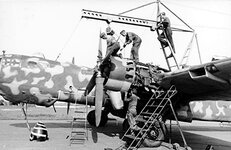FLYBOYJ
"THE GREAT GAZOO"
I believe the Winkler bomb bay door was a modified unit designed for the expanded bomb bayThat is what i am looking in to. I think (!) the doors became too big to closes the usual way. Hence the hydraulics i think. So was is a Winker Winkler type bomb bay?

